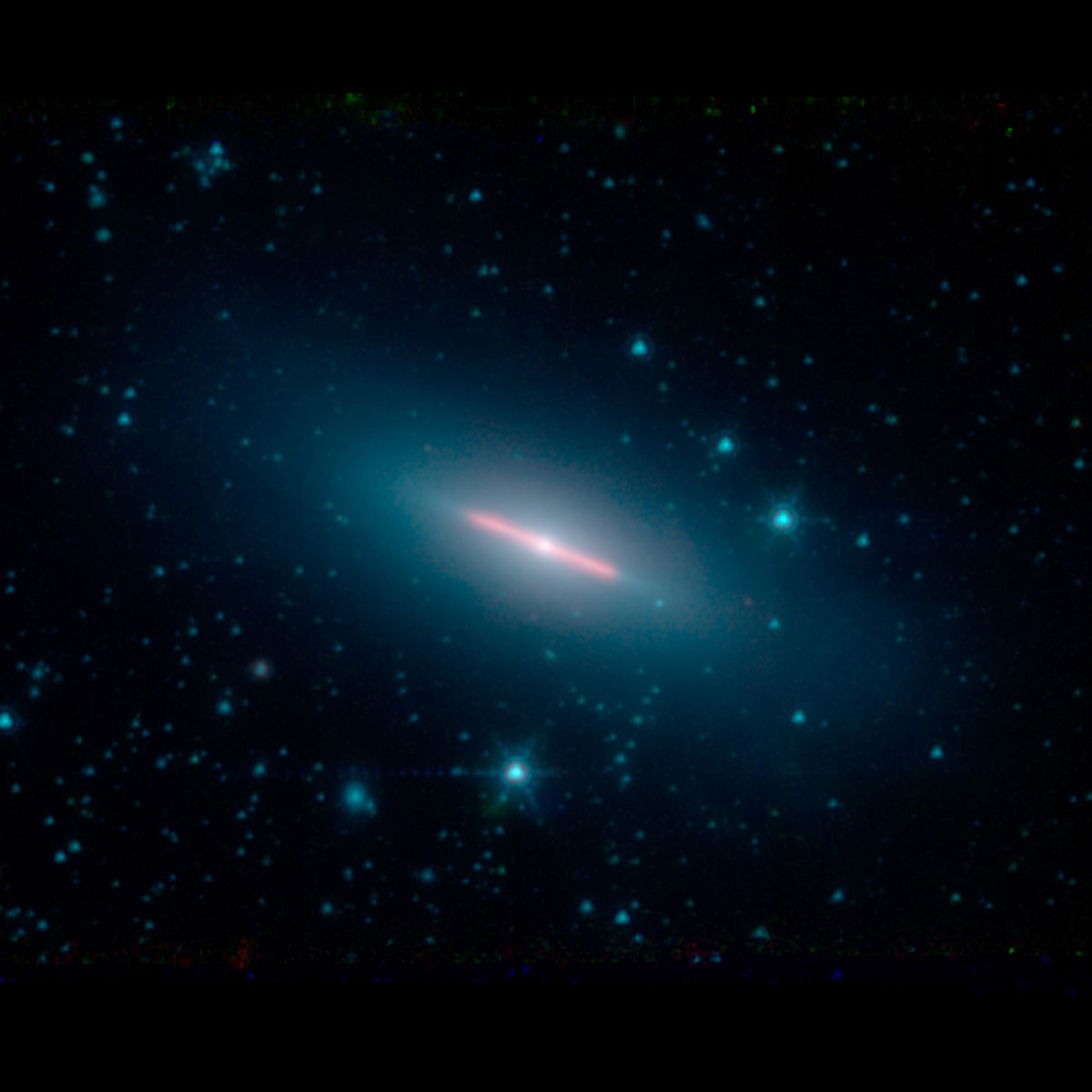NASA | JPL-Caltech | Spitzer | 2019 Aug 08
This image from NASA's Spitzer Space Telescope might look like a lightsaber floating in space, but it's actually an entire galaxy viewed on its side.
The long red beam in the center of the image is a galaxy called NGC 5866. It lies 44 million light-years from Earth and has a diameter of roughly 60,000 light-years — a little more than half the diameter of our own Milky Way galaxy. When we think of galaxies, we often imagine massive spiral arms or thick disks of dust. But not all galaxies are oriented face-on as viewed from Earth. From our viewpoint, we see only the edge of NGC 5866, so most of its structural features are invisible.
Spitzer detects infrared light, and the red color here corresponds to an infrared wavelength typically emitted by dust. With a consistency similar to soot or thick smoke, the dust absorbs light from stars, then reemits light at longer wavelengths, including in infrared. (Materials used to make blacklight posters work via this same mechanism, by absorbing ultraviolet light and reemitting visible light.) The clean edges of the dust emission from NGC 5866 indicate that there is a very flat ring or disk of dust circling the outer region of the galaxy. Dust rings and disks sometimes form in the wake of galaxies merging, but this galaxy lacks any sign of twists or distortions in the ring that often appear as the result of a merger. ...
